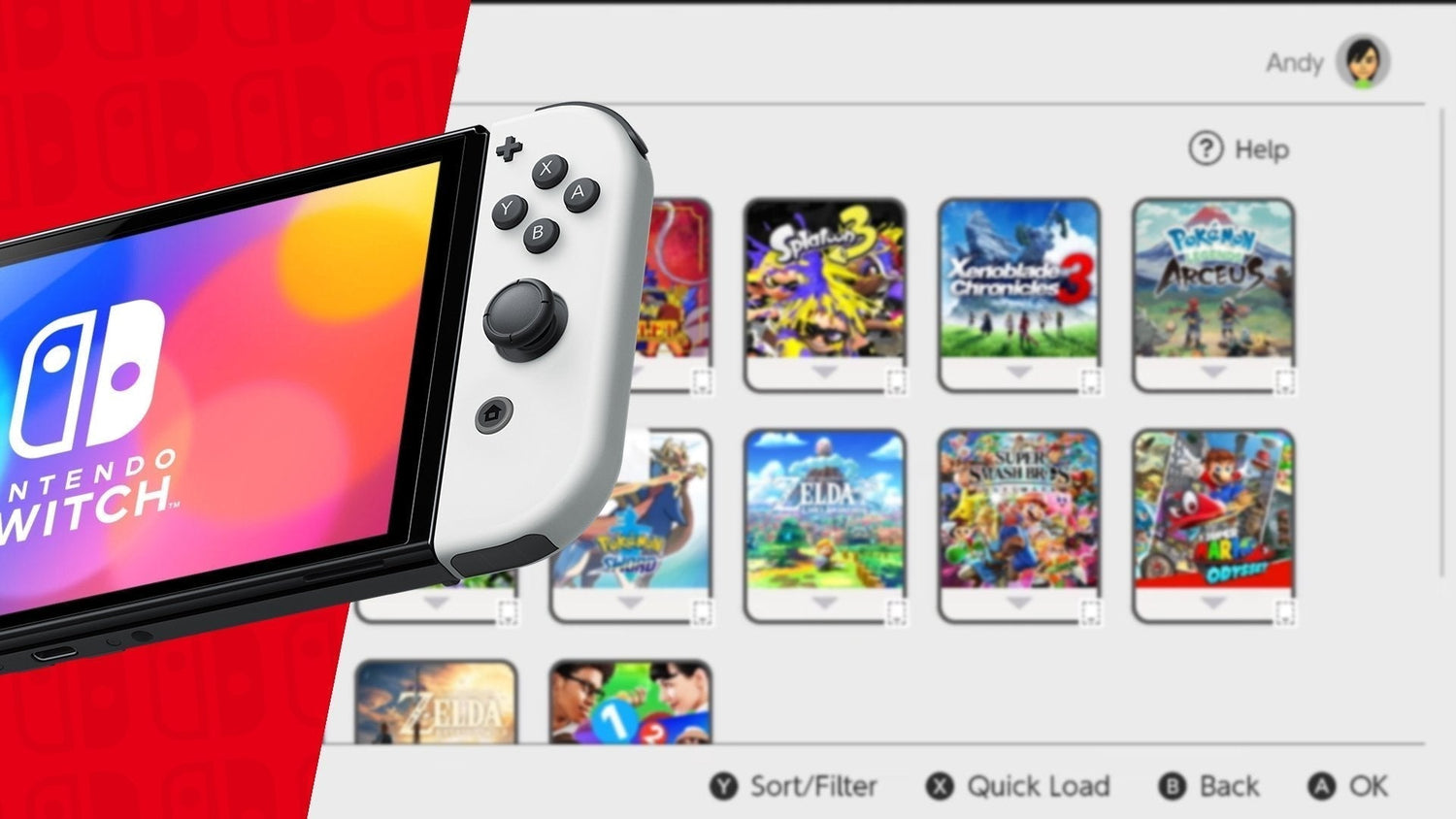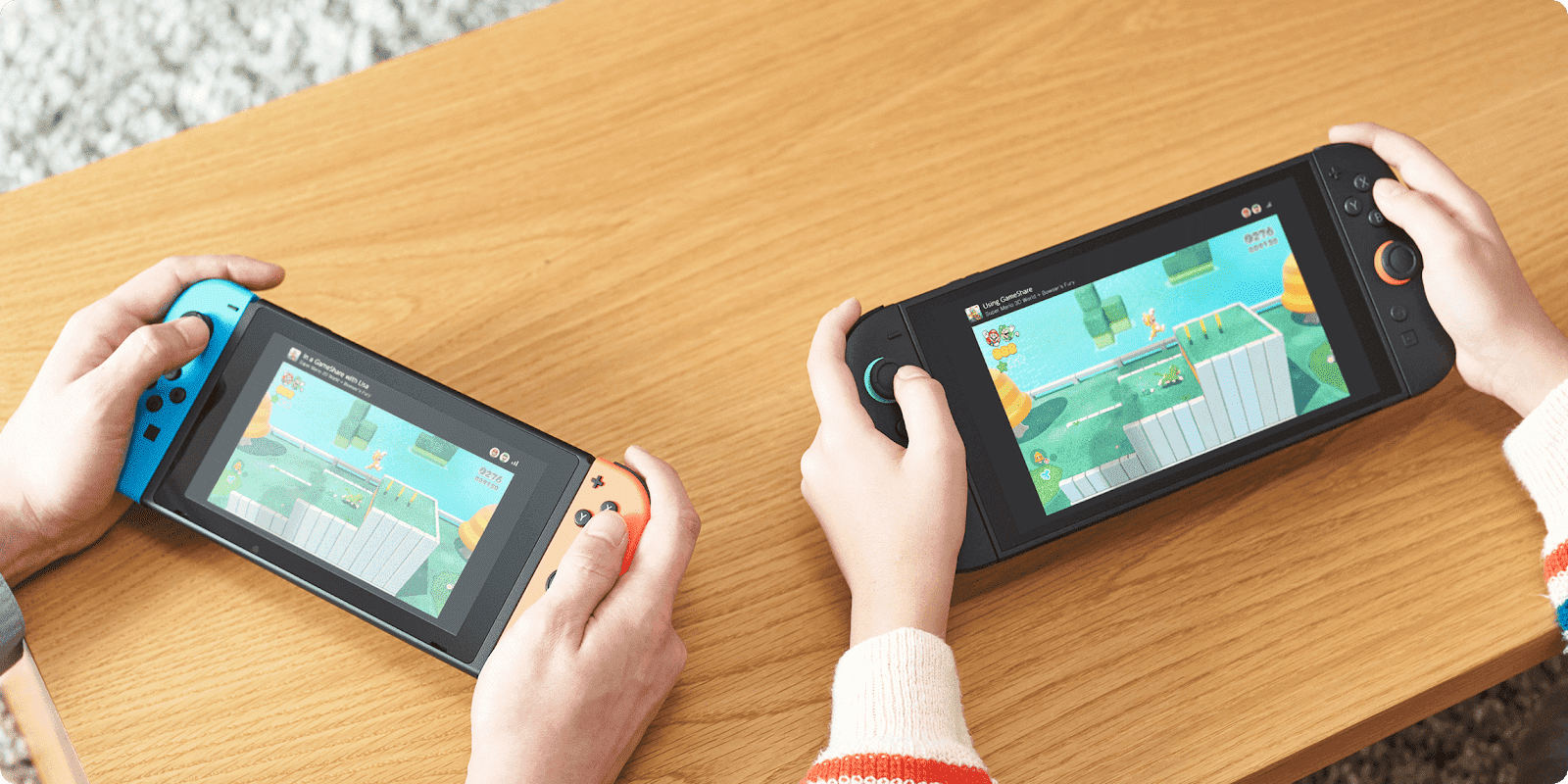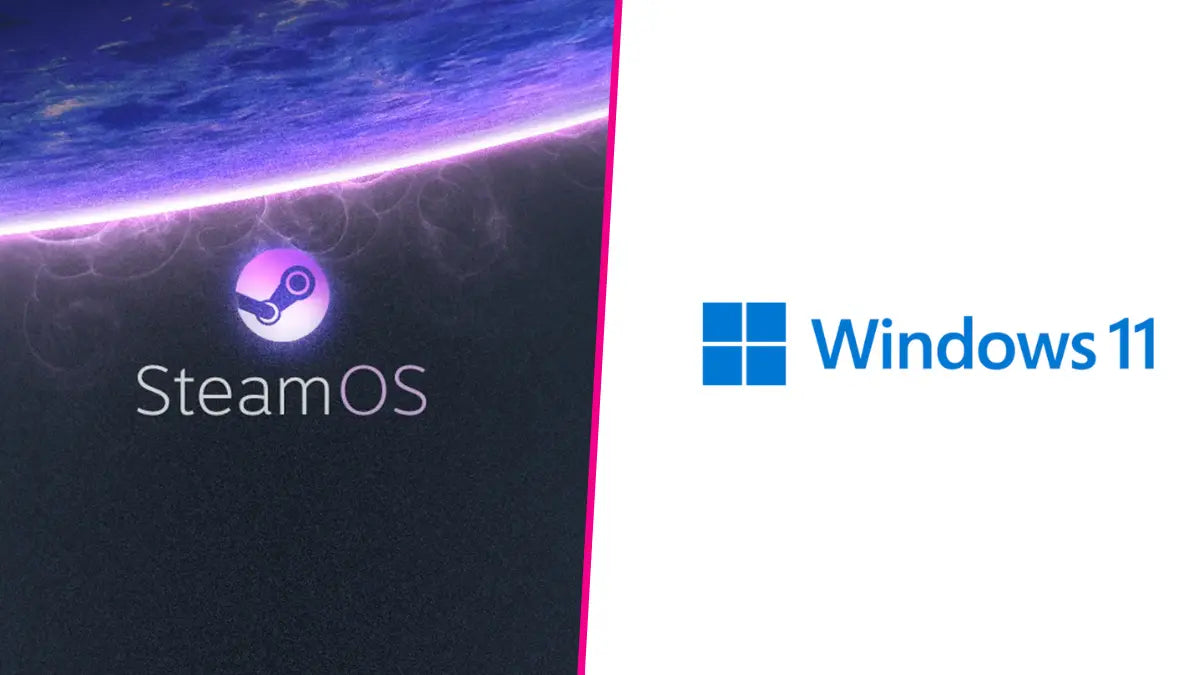With the advent of Switch 2, your gaming is no longer confined to physical cartridges or digital downloads. Nintendo introduced two brand new gaming formats, namely the Game-Key cards and Virtual Game Cards, to share your games with family and friends. Both come with their pros and cons, of course. And that’s exactly what we’re going to dig into today. I’ll walk you through these two new formats, so by the end, you’ll know what they are, how they work, and whether this is a real step forward in gaming. Without any further ado, let’s jump right in!
What Are the New Game Formats on Switch 2?
Before getting into the details, here’s a quick side-by-side look at how all four formats stack up.
|
Format |
Data Source |
Internet Required |
Storage Usage |
Resale / Sharing |
Offline Play |
Example Games |
|
Physical Cart (*Full Cartridge) |
Game data on physical cart |
❌ Not required |
✅ Minimal (runs off cart) |
✅ Resell or lend freely |
✅ Fully offline capable |
Mario Kart World, Nintendo first-party |
|
Game-Key Card |
Download required to internal/SD |
✅ Required (first time) |
❌ High (full game installed) |
✅ Resell or lend after download |
✅ Offline after first download |
Street Fighter 6, Yakuza 0, third-party |
|
Virtual Game Card (*Digital Download) |
Download to internal/SD only |
✅ Required |
❌ High (full game installed) |
❌ No resale; family sharing via Virtual Card |
✅ Offline on one loaded system |
Donkey Kong Bananza, eShop-only games |
The Switch 2 supports three ways to distribute games: traditional game cartridges (physical cards containing the full game data), new Game-Key cards (physical cartridges that don’t contain the game data, only a download license), and standard digital downloads (now enhanced by the Virtual Game Card system).
Each format has its own mix of physical and digital elements. A full cartridge contains the entire game on the card, so you can pop it in and play immediately. A Game‑Key card looks just like a cartridge and comes in a standard Switch case, but it doesn’t have the actual game data – when you insert it, it prompts you to download the full game over the internet.
After downloading, the Game-Key card must be inserted to launch the game (it works as a physical proof of ownership). Finally, a digital game has no physical media at all; it’s tied to your Nintendo Account. The brand new Virtual Game Card system, however, allows these digital titles to be “loaded” and “ejected” between systems, which makes digital ownership more flexible.
In essence, Nintendo is experimenting with hybrid distribution, if you will. Game-Key cards combine a physical token with a required digital download, and Virtual Game Cards add physical-like flexibility to digital games. Now, let’s dive deeper into each of the two buzzworthy formats to understand their ins and outs.
How Do Game-Key Cards Work on Switch 2?

A Game-Key card for Switch 2 is a physical game cartridge that contains no game data on it. Instead, it holds a license “key” that unlocks a digital download of the game. When you insert the card, the console connects to the internet and downloads the full game to your system storage or memory card. After the download, the game will appear on your home menu and can be played normally, but only if the Game-Key card is inserted (the card acts like a dongle to prove you own the game).
One important aspect is that Game-Key cards are not locked to your Nintendo Account or a single console. Nintendo confirmed that Game-Key cards will work on any Switch 2, just like a regular cartridge. In other words, if you lend a Game-Key card to a friend or sell it second-hand, the next person can insert it into their Switch 2, download the game to their system, and play it. This makes Game-Key titles resellable and shareable much like traditional physical games, a key advantage over one-time-use codes in a box.
Packaging for Game-Key games includes clear labels to avoid confusion. You’ll see a noticeable notice on the box showing the required download size. Also, Switch 2 cases for Game-Key titles have a white banner along the bottom that signals the card is a download key—not a full game cartridge. Keep an eye out for these markings so you don’t get caught off guard thinking you’re buying a ready-to-play physical game.
Why Publishers Are Choosing Game-Key Cards
The Game-Key approach was introduced for a few reasons. For Nintendo, it offers a solution to the rising costs of high-capacity game cartridges. The Switch 2 uses 64 GB carts as the only option for full physical releases. This approach addresses the high production costs of 64 GB physical cartridges, which are approximately $15 each. These carts are expensive to produce, especially compared to the 8 GB or 16 GB cartridges that third-party studios commonly used on the original Switch.
That being said, a Game-Key card likely costs much less. Publishers can still sell a physical product on store shelves without eating the cost of a big cartridge. A Japanese game industry consultant noted that publishers are “thanking Nintendo” for offering Game-Key cards as an option to help offset rising development costs. In fact, the vast majority of third-party Switch 2 titles at launch have been revealed as Game-Key card releases, indicating that many studios chose this cost-saving hybrid format. Nintendo itself, however, has stated it does not plan to put its first-party games on Game-Key cards, likely because those marquee titles can justify the expense of full cartridges.
For preservation-minded players, Game-Key cards feel like a half-step backward. The cartridge exists, but without any game data, it’s just a token, or a license that only works as long as Nintendo’s servers do. That makes ownership feel temporary, which runs against what physical media is supposed to guarantee.
What Are Virtual Game Cards on Switch 2?

The Virtual Game Card system lets you manage your digital game library as if it were a collection of cartridges. In the Switch menu, there’s now a “Virtual Game Cards” option on the HOME screen. This interface shows your digital titles as virtual cartridges that you can “eject” from one console and “load” onto another, much like taking a game card out of one Switch and inserting it into a different Switch.
In simpler terms, if you own a game digitally, you’re no longer locked into playing it only on one primary console with online checks – you can actively move the license between two systems and even lend it to someone else for a while, all within Nintendo’s ecosystem.
How Virtual Game Cards Let You Share Digital Games
For Switch owners who have more than one console (say you upgraded to Switch 2 but still have a Switch 1, or you have a family with multiple Switch 2 units), Virtual Game Cards come in quite handy.
- You can link up to two consoles to your Nintendo Account for virtual card sharing. Once linked, you can choose which device a particular digital game is currently “loaded” on. On the console that has the game loaded, it behaves almost like a physical copy: any user profile on that system can play the game, and no internet connection is required to launch it (after an initial one-time online check when you first load it).
- You can “eject” a virtual game card from your main Switch 2 and load it onto a secondary Switch in your household; that second system will then have the game available offline for anyone to enjoy, just like if you had handed them a cartridge. If you want to switch back, you simply eject it from that console (which can even be done via your Nintendo Account web page or locally) and load it on your own device again.
What’s really fascinating is that you can lend your VIRTUAL game to a family member through a local wireless handshake (with internet required at the moment of lending). You can transfer a game to a family member’s console for up to 14 days. During that period, the borrower can play the game on their system and even make their own save data.
When the lending period expires, or if they “return” it earlier, the game is removed from the borrower’s console, but their save file remains intact. If they ever buy the game themselves or borrow it again later, they can pick up right where they left off.
This lending feature is reminiscent of the way you might loan a physical game to a friend, albeit with a built-in time limit and restricted to your Nintendo family group (which can include up to 8 accounts). It’s a very controlled form of sharing, but it’s significant – console platforms have generally been very rigid with digital content, and Nintendo is now providing an official method to “try before you buy” among family members or share a single purchase within a household.
Benefits of Virtual Game Cards on Nintendo Switch 2
For gamers, this system addresses some longstanding pain points of digital purchases. Previously, if you bought a game digitally on Nintendo Switch, you could only designate one Switch as your primary (which could play offline) while any other device using your account had to be online and only your account could play the games on it. This made owning multiple Switch consoles or sharing games with a spouse/child cumbersome. Virtual Game Cards “add some of the flexibility of physical game cards to your digital game library”, as Nintendo puts it.
You can now, for instance, take your entire digital library to a friend’s house on your Switch 2, and if you want to let your friend play one of your games on their own Switch 2, you could lend it to them digitally instead of carrying cartridges around. It also means if you have a Switch 2 and keep your older Switch in the family, you can share games across generations. This kind of forward-and-backward sharing is a new convenience.
Game-Key vs Virtual Card: Which New Switch 2 Format Is Best?
New formats mean new considerations for players. How do Game-Key cards and Virtual Game Cards affect things like installation, load times, storage space, convenience, offline play, and the sense of ownership? Let’s explore each of these aspects so you know what to expect:
Storage Requirements: Which Format Saves Space?
- Game-Key Cards work like digital games, meaning you must download the full game to internal storage or a microSD Express card, and the cartridge simply acts as a license check. It’s the same story for pure digital games: every title takes up full storage space.
- Virtual Game Cards let you juggle games between two consoles, but the storage demands stay the same: every active game needs to be installed somewhere. If you mostly buy Game-Key or digital games, expect your 256 GB to fill up fast. For serious gamers, investing in high-speed microSD Express cards isn’t optional. It’s essential. If you stick with full cartridges where possible, you’ll delay that storage headache a lot longer.
If you’re juggling a bunch of physical titles too, it helps to have a smarter way to carry them around. The Mimic Chest packs 36 cartridges into three compact cases that blend in with your shelf — no rattle, no mess, and yep, you can even print custom spines.
Installation, Load Times Compared
- Game-Key Cards look exactly the same but work differently. They don’t contain the game data, just a license, so the moment you insert one, your Switch 2 forces you to download the full game before you can play. Once downloaded, the game runs off your storage, but the card has to stay inserted to verify ownership.
- With Virtual Game Cards, digital games have the flexibility of physical ones, letting you load them onto any linked console for offline play. But it’s worth noting that only one console at a time can have the game loaded.
Best Switch 2 Format Based on Your Needs: A Quick Guide
With the Switch 2’s new options, how should you decide between physical, Game-Key, or pure digital for a given title? Here are some practical takeaways and a comparison to guide your decision:
-
If you want to save storage space on the console: Again, full cartridges win, since they don’t gobble up your gigabytes. A game like Mario Kart World at 23 GB on cart saves you that space. Conversely, be prepared that something like Street Fighter 6 as a Game-Key will occupy a chunk of your storage equal to its entire file size.
- If you value instant play and minimal internet use: Opt for full physical cartridges when available. These let you avoid large downloads and you can start playing right away out of the box. For example, Nintendo’s first-party games (like the next Mario or Zelda) are on actual cartridges – a good choice if you have slow internet or just hate waiting. Cartridges are also best if you think you might revisit the game many years later and want that peace of mind.
Also, if you’re carrying carts around, Force Field 2 makes it way less clunky — it keeps your Switch 2 protected and dockable, and the grips hide two spare games so they’re always within reach.
-
If convenience and having all your games at your fingertips matters most: Consider going digital and using Virtual Game Cards. Not swapping cartridges and carrying nothing but the console is incredibly convenient, especially for portable gaming.
-
If you’re concerned about long-term preservation: Try to buy physical full cartridges for your absolute favorite games or any single-player games you think you’ll revisit in the far future. Rely on digital (including Game-Key) for games you’re less worried about or that are multiplayer-focused (which might not work decades out regardless of format). For example, you might get Cyberpunk 2077 on cartridge to have that forever-playable, but you might not mind Street Fighter 6 being a download key because its longevity depends on servers and updates anyway. It’s a personal choice, balancing your collector instinct with practicality.
When deciding, also consider the availability: Not every game will offer all formats. Some Switch 2 games might only be digital (no physical release at all), some might be digital or Game-Key but no full cart option, etc. For example, if a certain AAA third-party game is only being sold as a Game-Key or a code, you won’t have the option of a true cartridge. In those cases, you’ll have to choose between the lesser of two evils: a Game-Key (with physical resale but large download) or just digital (no physical but perhaps you prefer not having the cart if you wouldn’t resell anyway). Knowing what each entails, you can make an informed choice.
Are Physical Games Going Away? What This Means for the Industry
Nintendo’s Game-Key and Virtual Game Card systems tackle the rising cost and hassle of making physical games. Games keep ballooning in size, and cranking out big cartridges hits publishers’ wallets hard. So, many are skipping the heavy costs and rolling with Game-Key cards instead.
Of course, collectors raised their voices. There are campaigns urging folks to steer clear of Game-Key releases. Still, early numbers hint most players just want quick access to their games, no matter the format. Take Street Fighter 6 — it runs on Game-Key and is flying off shelves on Switch 2.
Virtual Game Cards bring something new to the table: timed digital lending inside the family circle. It’s a setup PC users have seen for a while but hasn’t caught on much on consoles yet. It’s Nintendo’s clever workaround for homes juggling multiple Switches, letting everyone get their turn without buying the same game twice.
This isn’t a sign that physical cartridges are going extinct. Nintendo’s first-party games still drop on full carts. But the scales are tipping. Switch 2 shows us the gaming world is edging steadily toward digital-first, no looking back.



Leave a comment
All comments are moderated before being published.
This site is protected by hCaptcha and the hCaptcha Privacy Policy and Terms of Service apply.